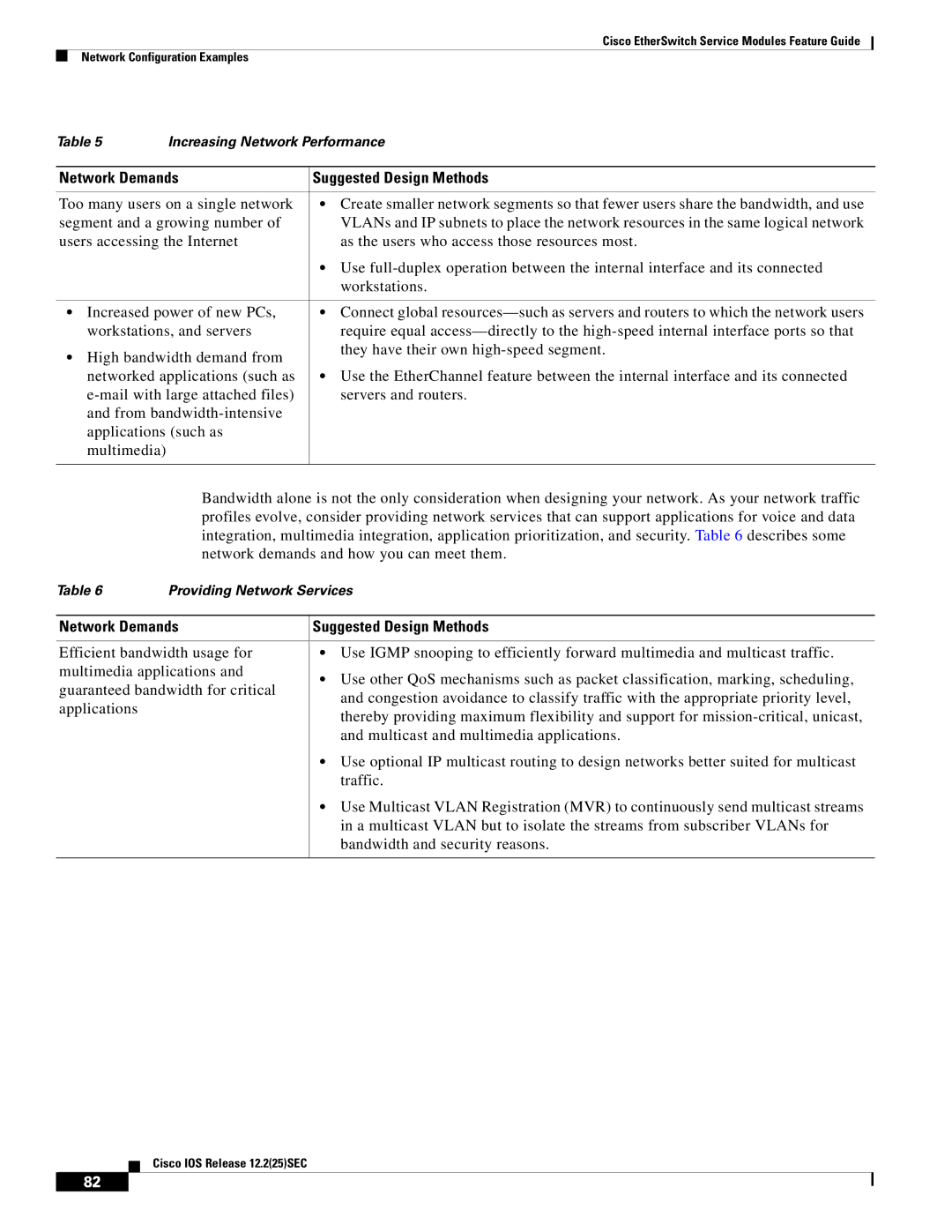
Cisco EtherSwitch Service Modules Feature Guide
Network Configuration Examples
Table 5 | Increasing Network Performance | ||
|
| ||
Network Demands | Suggested Design Methods | ||
|
| ||
Too many users on a single network | • Create smaller network segments so that fewer users share the bandwidth, and use | ||
segment and a growing number of | VLANs and IP subnets to place the network resources in the same logical network | ||
users accessing the Internet | as the users who access those resources most. | ||
|
| • Use | |
|
| workstations. | |
|
| ||
• Increased power of new PCs, | • Connect global | ||
workstations, and servers | require equal | ||
• High bandwidth demand from | they have their own | ||
| |||
networked applications (such as | • Use the EtherChannel feature between the internal interface and its connected | ||
servers and routers. | |||
and from |
| ||
applications (such as |
| ||
multimedia) |
|
| |
|
|
| |
| Bandwidth alone is not the only consideration when designing your network. As your network traffic | ||
| profiles evolve, consider providing network services that can support applications for voice and data | ||
| integration, multimedia integration, application prioritization, and security. Table 6 describes some | ||
| network demands and how you can meet them. | ||
Table 6 | Providing Network Services | ||
|
| ||
Network Demands | Suggested Design Methods | ||
|
| ||
Efficient bandwidth usage for | • Use IGMP snooping to efficiently forward multimedia and multicast traffic. | ||
multimedia applications and | • Use other QoS mechanisms such as packet classification, marking, scheduling, | ||
guaranteed bandwidth for critical | |||
and congestion avoidance to classify traffic with the appropriate priority level, | |||
applications |
| ||
| thereby providing maximum flexibility and support for | ||
|
| ||
|
| and multicast and multimedia applications. | |
|
| • Use optional IP multicast routing to design networks better suited for multicast | |
|
| traffic. | |
|
| • Use Multicast VLAN Registration (MVR) to continuously send multicast streams | |
|
| in a multicast VLAN but to isolate the streams from subscriber VLANs for | |
|
| bandwidth and security reasons. | |
|
|
| |
Cisco IOS Release 12.2(25)SEC
82
